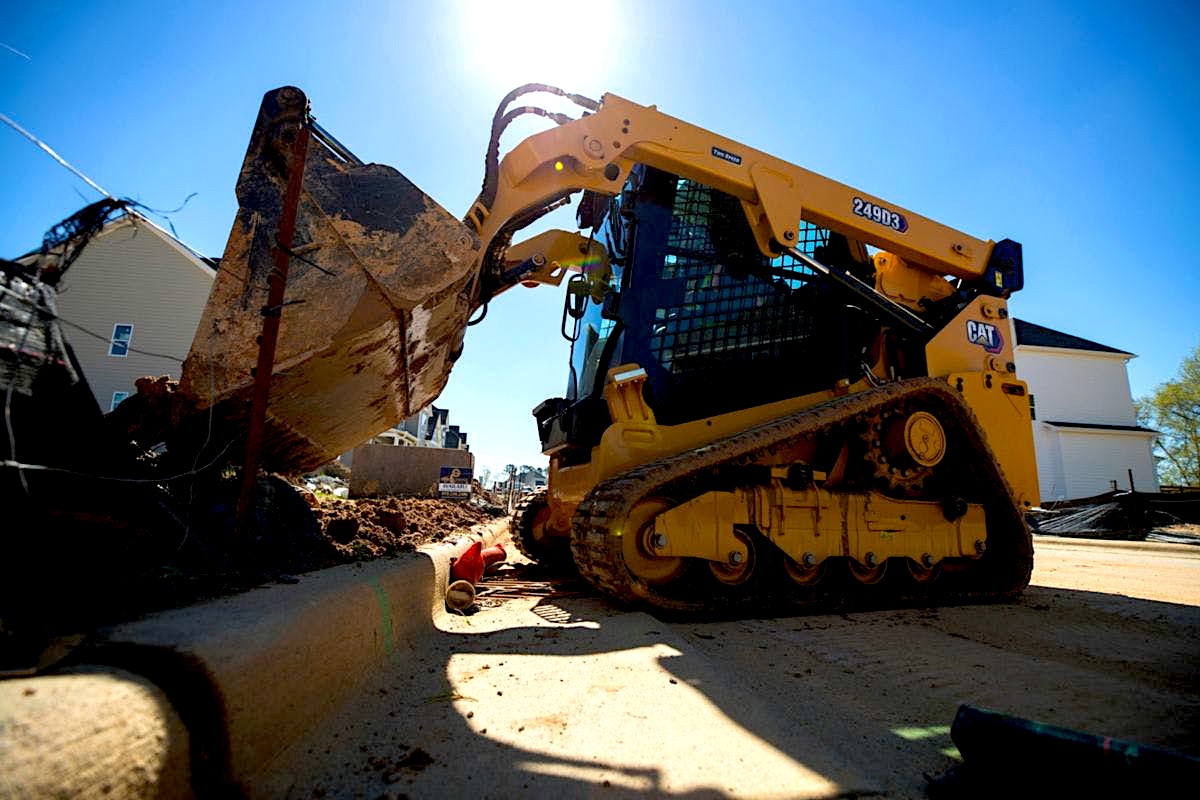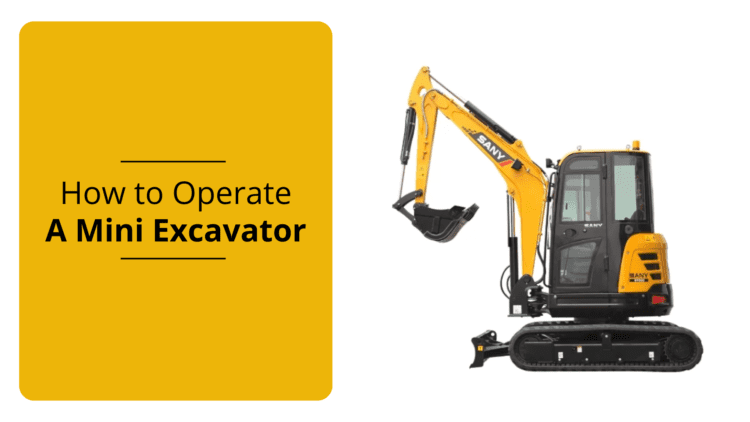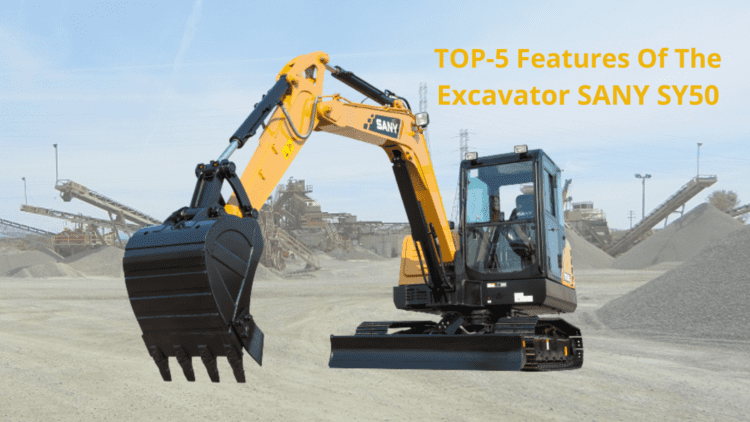Mini excavators have evolved into indispensable tools in the realm of construction equipment. Employed in a multitude of construction, landscaping, and utility endeavors, their compact design and versatility render them indispensable for professionals and do-it-yourself aficionados alike.
Nonetheless, acquainting oneself with the intricacies of a mini excavator is paramount prior to operation. This entails acquainting oneself with pre-operation procedures, mastering basic controls, learning the nuances of bucket utilization and detachment, and, above all, prioritizing safety while maneuvering the machine.
Getting Acquainted with Your Mini Excavator
Mini excavators, known as compact excavators as well, boast a diverse range of brands and models, offering flexibility in equipping them with tailored attachments to meet specific project demands. Additionally, these machines exhibit varying capabilities based on their specifications.
Despite their shared utility, individual mini excavator models feature unique cab and control configurations. It is advisable to thoroughly review the operator’s manual and capacity charts, acquainting yourself with the machine’s levers, pedals, and joysticks prior to commencing operations.
Pre-Operational Safety and Inspection Checks
Safety is paramount when operating heavy machinery. Prior to starting the engine, it’s essential to conduct a thorough pre-use inspection. During this inspection of a mini excavator, it’s imperative to examine the tracks for any signs of wear or damage, check fluid levels, and ensure that all attachments are securely fastened.
When inspecting the tracks, it’s important to check for excessive or defiant cracks. Additionally, it’s crucial to ensure that the tracks are tightly secured to the machine to prevent them from walking off. Referencing the owner’s manual is recommended to determine the ideal tightness of the tracks. Depending on the machine, tracks can be tightened using a grease fitting or a socket set.
Step-by-Step Guide to Operating a Mini Excavator
To begin, ensure safe entry into the cab by using three points of contact and confirming a clear surrounding area. Once inside, orient yourself with the controls by facing the side with the blade, which serves as the “front” of the mini excavator. Although the cab can swivel 360 degrees, the controls are situated based on the blade side.
Now that you’re oriented, let’s delve into some mini excavator operating tips. Generally, there are five joysticks to manage while operating a mini excavator. Positioned in front of the operator’s chair, there are two drive sticks on the left and two on the right.
To move forward, push both front sticks forward; to reverse, pull them back. For turning the entire machine right, push the right stick forward and the left stick back, and vice versa for left turns. To rotate only the cab, utilize the left joystick and push it left or right.
Many mini excavators feature a right foot pedal controlling the swivel of the boom arm. Pressing the left side rotates the stick left, and the right side moves it right. On the same left joystick used for cab rotation, pushing forward lowers the stick arm, while pulling back raises it.
A smaller joystick on the right manages the bucket and attachment. Pulling left closes the bucket, and pushing right opens it. Pushing forward lowers the boom arm to the ground, and pulling back raises it.
The larger joystick on the right operates the leveling blade. Pushing forward lowers the blade, while pulling back raises it.
Note that these controls are for ISO operation. In SAE mode, joystick controls are reversed. To switch modes, the mini excavator must be turned off. The control switch’s location varies, so consult the owner’s manual for proper instructions.
Before navigating a new site, familiarize yourself with basic movements. Many arm and swinging actions can be practiced while idling.
Digging and Excavation Techniques
Becoming proficient at operating a mini excavator takes time and practice, but there are some key tips to keep in mind for safe and effective digging and excavation:
- Prioritize safety by ensuring there are no underground utilities in your work area.
- Choose the right size mini excavator for the job, considering factors like soil type and reach requirements.
- Keep the leveling blade on the ground while digging to maintain stability and machine balance.
Practice these techniques gradually to improve your skills over time.
| A | B | C |
| Generate tips for mini excavator operation. | Provide safety guidelines for excavation work. | Discuss the importance of equipment selection for specific tasks. |
Loading and Dumping Materials
When it comes to material handling, mini excavators offer more than just digging capabilities. They can also efficiently load materials into dump trucks, primarily utilizing the boom arm with curl-in and curl-out functions. To ensure optimal performance while loading and dumping with a mini excavator, consider the following best practices:
- Know Your Loading and Dumping Area: Depending on the project, you might be loading materials into different types of vehicles such as dumpsters, dump trucks, or articulating dump trucks. Each vehicle has specific height requirements, which will impact the size and reach needed for the mini excavator.
- Understand the Material: The type of material being handled is crucial. For demolition projects involving heavy materials like brick and concrete, a robust mini excavator capable of lifting heavier loads is preferable. On the other hand, landscaping tasks that involve moving dirt may not require as much lifting capacity.
- Explore Advanced Techniques: While basic loading and dumping techniques are essential, there are many advanced methods that can enhance efficiency. These techniques are often learned through on-the-job experience, emphasizing the importance of patience and precision over speed for optimal results.
By following these guidelines and continually refining your skills, you can maximize the effectiveness of your mini excavator for material handling tasks, leading to improved productivity and project outcomes.
Post-Operation Procedures and Maintenance
After completing your tasks, adhere to the appropriate shutdown protocols. Perform regular maintenance duties such as lubrication and tidying up to uphold the durability of the compact excavator. Additionally, consider conducting a thorough inspection, akin to the pre-operation check, to maintain machine integrity.
Conclusion
Operating a compact excavator requires undivided attention. Novices can efficiently handle tasks by familiarizing themselves with the equipment, following safety guidelines, and ensuring responsible operation. Continuous training and access to reliable machinery are crucial factors for success.
Interested in renting a compact excavator for your upcoming project? Explore the extensive range of mini excavator rentals available in Next Level Rental NC. Additionally, delve into our blog for insightful content on compact excavators, aiding in the enhancement of your expertise and proficiency.




